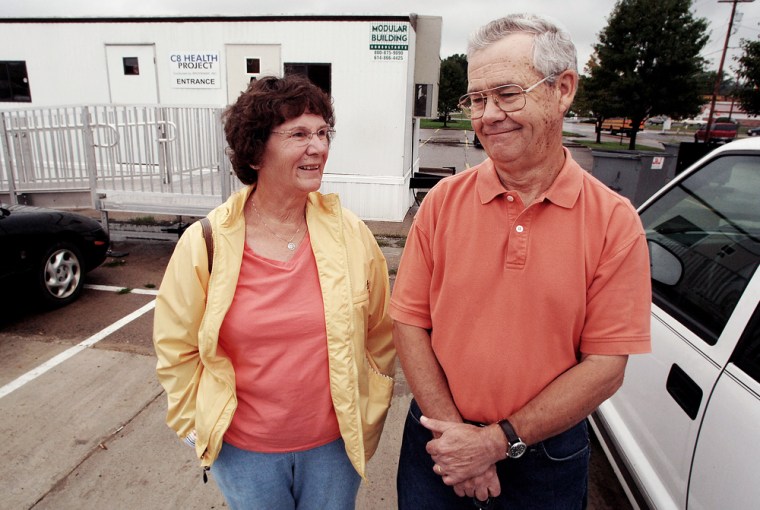Ted Johnson worked 35 years for a DuPont Co. chemical plant and believed what company officials said about the safety of the operation. Now, he’s not so sure.
Johnson and his wife, Barbara, are among more than 43,000 people in the mid-Ohio Valley who have signed up for tests to find out if a chemical used to make Teflon might harm their health.
“At first I thought ’What I don’t know, won’t hurt me,”’ said Barbara Johnson. “We’re 69 and I thought we’ve been doing pretty good.”
The Johnsons don’t have health problems and Ted Johnson never worked in the Teflon section of the plant.
But on a recent rainy afternoon, the couple yielded to pressure from their four grown children and drove from their home in Cutler to the Ohio River town of Belpre, 17 miles away, to have their blood tested and to answer questions about their health. Getting answers about their long-term health could take years.
Class-action settlement
DuPont is paying for the survey and testing as part of its settlement of a class-action lawsuit over the chemical ammonium perfluorooctanoate, also known as C8. The chemical is used to produce Teflon at the plant in Washington, W.Va., along the Ohio River.
Area residents sued DuPont in 2001, claiming the chemical used at the Washington Works plant contaminated drinking water.
Since August, more than 17,000 residents of the six Ohio and West Virginia water districts covered by the settlement have taken part in the study. The project has a waiting list of about 26,000 people, and it’s expected that up to 60,000 will eventually take part.
Though used since World War II, the long-term effects of C8 on people are unknown. The screenings and analysis will try to determine if there is a link to cancer, heart disease and birth defects. The chemical has produced liver cancer in lab rats, and earlier this year a federal scientific review panel concluded C8 is “likely” to be carcinogenic to humans.
DuPont disputes that, citing its own studies on about 1,100 employees at its Washington Works plant. The company said its research has found higher cholesterol levels among employees who worked closest to C8 but no overall health problems.
DuPont also points to a recent University of Pennsylvania Medical School study of about 380 people who live near the plant. It found the residents had up to 80 times more C8 in their blood than the general population, but the researchers couldn’t find a link to increased liver, kidney, thyroid or cholesterol problems. They said more study was needed.
Limited evidence
Answers will begin to come next year when a court-appointed panel of three epidemiologists reviews the latest screening results.
Some findings will come quickly, said panel member Kyle Steenland, an epidemiology professor at Emory University. But others — such as links to cancer and heart disease — may take up to four years.
“The evidence about the health effects of C8 are limited. There are some concerns about cancer and some concerns about reproductive effects,” Steenland said. “There is some evidence it might have some effect on heart disease as well.”
DuPont has said it will continue to use C8 because current technology requires the chemical. C8 is distilled out and is not present in Teflon or the other products it is used to produce, DuPont said.
Interest in the health survey is high because DuPont is one of the region’s largest employers, with about 2,000 workers.
“In a small town like this, it’s huge,” said Belpre resident Lori Bradshaw. “When you’ve been in this area all of our lives, and to think something like this could be going on, and so many people could be affected, it’s really scary.”
Financial incentive
Each person who completes the screening leaves with a $400 check, part of the $70 million that DuPont agreed to spend on the health analysis.
Bradshaw, 24, admits the money was an incentive for her and her husband to be screened. They haven’t decided if their 4-year-old son will participate.
Each sample is tested for the presence of C8 and for organ function and cancer markers. The tests are confidential and do not look for HIV, drugs or sexually transmitted diseases.
Samples are sent daily to labs in Ohio and Pennsylvania, and thousands of results have already come back.
If C8 is found to cause problems, DuPont could be required to spend an additional $235 million to monitor residents’ health over the long term.
For some, the testing may simply help answer questions. Chris Hendricks, a 22-year-old Marietta College student, wonders if contaminated drinking water contributed to his father’s heart attack several years ago.
“It would be nice to know if that was the reason.”
